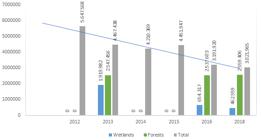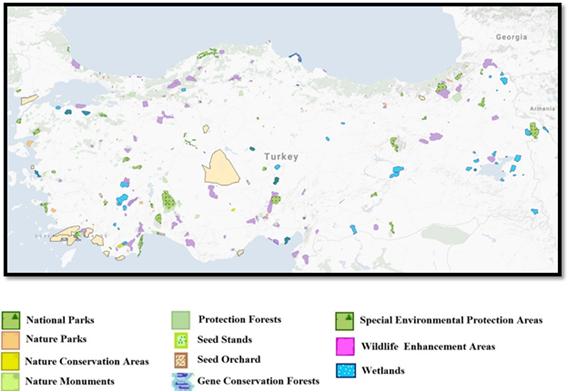ABSTRACT
The biodiversity on Earth, with the many species, ecosystems, and ecological processes that constitute the natural environment, is of incalculable value to humanity. Conservationists efforts are often inspired by Turkey’s unique biological system, which is highlighted by a broad biodiversity and a 34% rate of endemism. This fragile biotic wealth is sometimes threatened by pressures for economic development. Biodiversity-rich regions tend to have more urgent needs for conservation but frequently lack the financia resources and human capacity to achieve effective protections. Even so, there are many legislative leaders, institutional administrators, and other persons who are willing to work to save protected areas, or conservation areas (although this does not mean that their resource value would be properly protected); in fact, Turkey is one of the most enlightened nations in this regard. An institutional approach has been followed to bring new perspectives to the debate about the effectiveness of protected areas in Turkey. Protected areas have decreased steadily, from 5.647.568 ha in 2012 to 3.451.947 ha in 2018. This analysis confirms that protected areas face institutional restrictions, lapses in management, and capacity limitations. There is a need for a more adaptive approach to policy-making processes related to biodiversity conservation in Turkey.
Keywords:
Development; Biodiversity; Sustainability; Policy; Law

 Thumbnail
Thumbnail
 Thumbnail
Thumbnail
 Thumbnail
Thumbnail
 Thumbnail
Thumbnail
 Thumbnail
Thumbnail
 Thumbnail
Thumbnail





